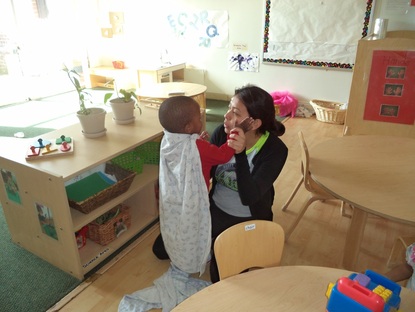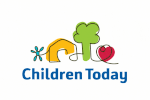|
By Dora Jacildo
According to certified mental health counselor Francoise Mathieu, “compassion fatigue is characterized by deep emotional and physical exhaustion and by a shift in a caregiver’s sense of hope and optimism about the future and the value of their work.” This can occur when staff are working with families who have been deeply traumatized and are constantly in crisis. If not properly addressed, compassion fatigue can affect an individual’s personal and professional life. April was a challenging month, to say the least. It seemed as if every day we were dealing with a crisis and the problems families were sharing were taking a toll on the staff. Within a two week period we had an infant on life support, a parent brutally attacked, a parent with suicidal symptoms, a parent with a life-threatening disease, and a family begging for our help in keeping Child Protective Services from taking their children. We know that working with children experiencing homelessness entails making a commitment to help beyond the classroom and beyond what would be expected of a typical child development center. And, at the same time, we must make a commitment to take care of ourselves, knowing that without doing so we run the risk of burn-out and vicarious trauma (negative emotional or psychological effects of the experience of helping people impacted by trauma). The culture of Children Today is grounded in empathy, not just for the children and families we care for, but for each other. Staff are encouraged to look to each other for support, to share their feelings, and to ask for help when they are overwhelmed or overwrought. Knowing that it’s okay to step away from a situation that is particularly troubling and that someone else will be there to take over for a while provides tremendous relief. Fortunately for us, working with children can be such a joy that they themselves contribute so much to the satisfaction we get out of helping others. All that being said, the only way to truly protect your health, your relationships, and your clients, is to make a commitment to implement self-care strategies into your life. They can be simple things like exercising, or delegating, or learning to say no more often. The important thing is to pay attention to your own needs and make time for yourself. Today, I’ll pick up my son from daycare and I’ll take him to the park to play dinosaurs before it gets dark. This will be the one thing I do today to nourish my spirit so that I can be fully present tomorrow.  By Elia Rocha I don’t mean to state the obvious, but we’re all egocentric. That’s not a judgment. I think that by and large, we’re all hard-wired to filter information and external stimuli through the prism of our needs and experiences. This leads me to another possibly obvious point, which is that having empathy is a skill which takes practice to hone. More than most professions, I believe that being in the child development field requires an uncommonly high level of deliberation in thought and deed. Teachers are constantly and critically reassessing their understanding of children’s behavior, as well as their own motivations. In other words, they are practicing empathy, putting themselves in the shoes of the children they care for and teach, to see beyond their behavior to the need they are trying to communicate. There is a little girl in the preschool classroom at Play House West. She is like a constantly revving engine, ready to react to any and all circumstances in a heightened manner. Waiting a turn, or sitting still during story time can be especially hard. Her primary caregiver is attuned to her cues and when it looks like her anxiety is escalating and her impulse control is diminishing, she knows its time to help this little girl calm her body down. What she, or another teacher will do, is take her for a walk and give her bubbles to blow. The walk removes her from the fraught environment, and the bubbles regulate her breathing, allowing her the time to calm down and rejoin her classmates. This approach takes the need the child is trying to communicate (I need help calming down) as paramount, instead of merely assessing the behavior as disruptive, and trying to control it. The fact is that by taking this little girl for a walk and giving her bubbles to blow, they are showing her how she can regain control when she is feeling stress. She now tells her teachers when she needs her bubbles. There are many other strategies that teachers use to help the children in their care feel safe and successful. What works for this child may not work for another. And, that’s the point. The deep, and thoughtful empathy the teachers practice means that every child is seen, approached, and cared for as an individual. By Cheryl Ichikawa Teachers work diligently each and every day to create an environment that is conducive to learning for all children. However, more than just choosing what materials to put on the shelves or which pictures to hang on the walls, teachers understand that in order for them to create the “right” classroom environment, they must first form a relationship with the children. Relationships are based on understanding, trust and predictability. It is about knowing each child, knowing what interests them, what triggers them and what brings them back to their center. It’s about knowing that what they do is directly correlated to how they are feeling inside. Children respond to what they experience. They imitate what they see. They repeat the things they hear. And they do things that seem interesting regardless of the consequences. The relationships that we form with children are built in part on how we respond to their actions. If we support children from a place of learning, children will grow. However, if we try to control what children do, teacher-child conflict is inevitable. It is the teacher that sets the pace and tone in the classroom. It is our response to the children and to situations that creates the dynamic that exists between the children and the teacher. Children want to be independent. They want to do things for themselves. What I have found is that children get frustrated when they constantly have to wait for teachers to help them. By creating more self-help opportunities in the classroom environment, children learn to problem-solve on their own. When children are able to find their own solutions, conflicts lessen and harmony is maintained.
Teachers learn what children are interested in through careful observation. Using what they learn, teachers can create a physical environment that is responsive to the interests and developmental needs of the children. Pictures are powerful. By capturing teachable moments, the other children in the classroom can and often do learn by visual example. A teacher’s primary goal is to create the “right” environment for children. A safe environment. A learning environment that allows children to express their feelings and work through emotions in a positive and constructive way. Doing that takes work and patience. It takes lots and lots and lots of examples. It takes supporting a child that struggles and encouraging a child who is capable of being more independent. It means providing materials that challenge children without frustrating them, and acknowledging their efforts. Success comes in the form of peace in the classroom, harmony among the children and a whole lot of learning going on. |
AuthorVarious members of the Children Today staff contribute to these blog posts. Archives
July 2024
Categories |
